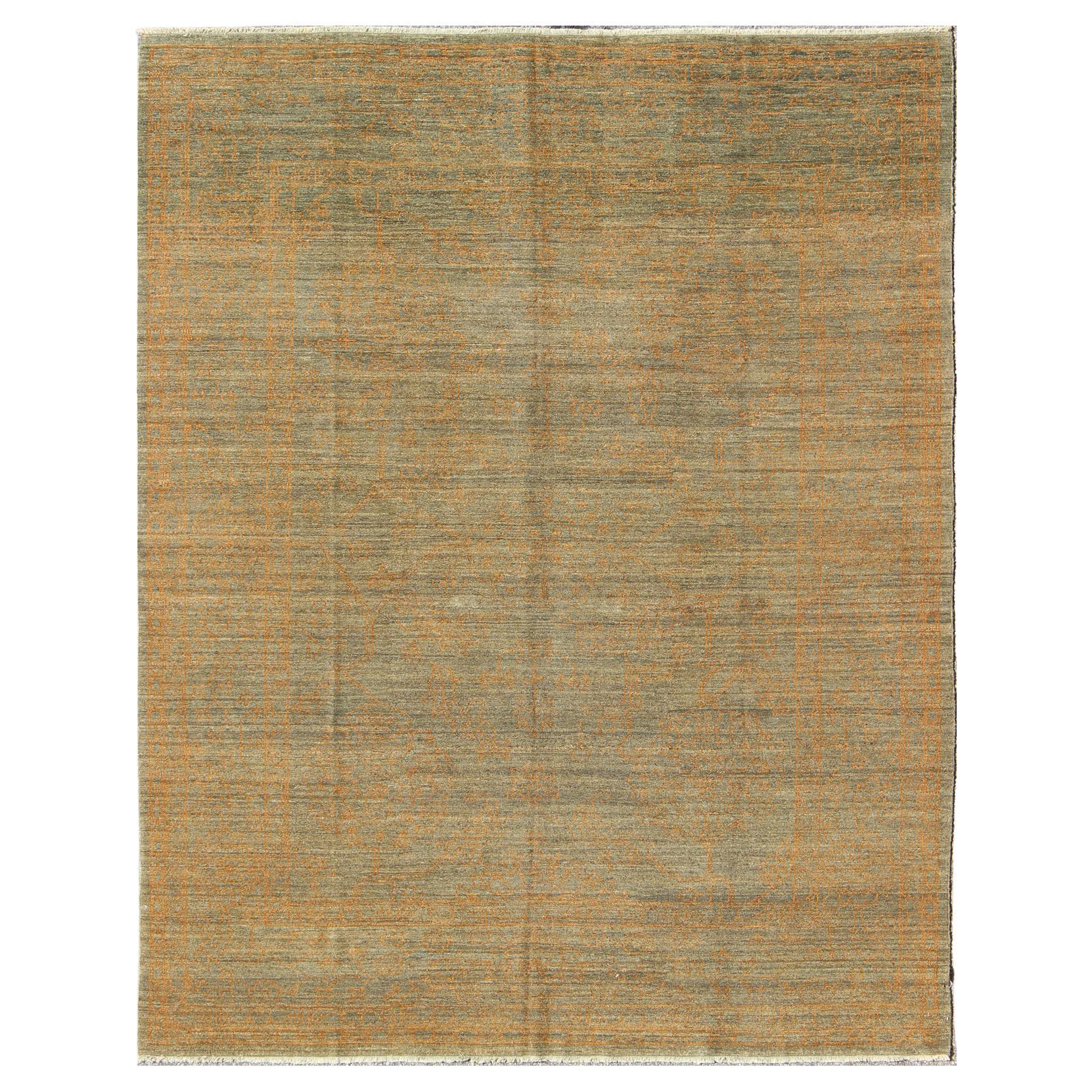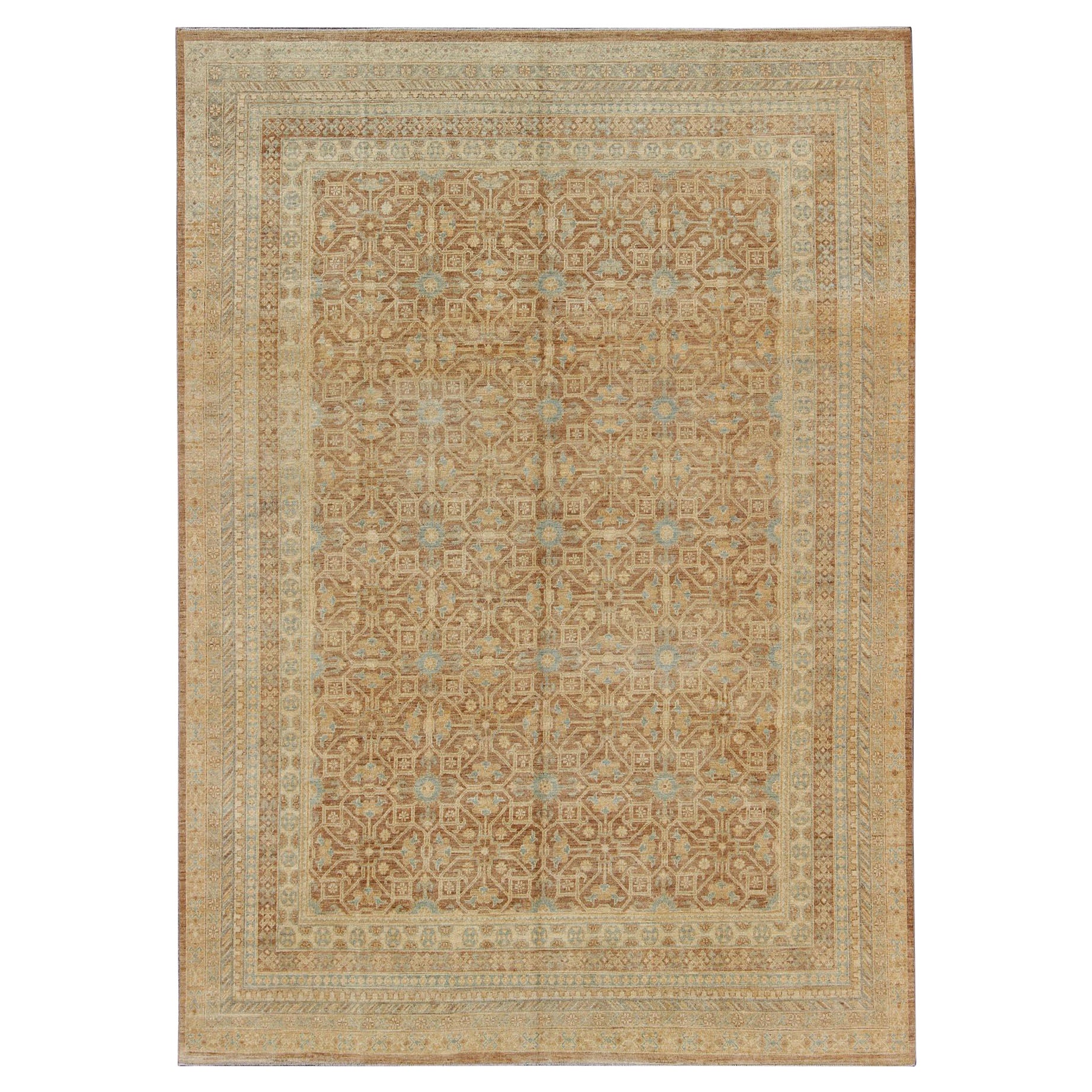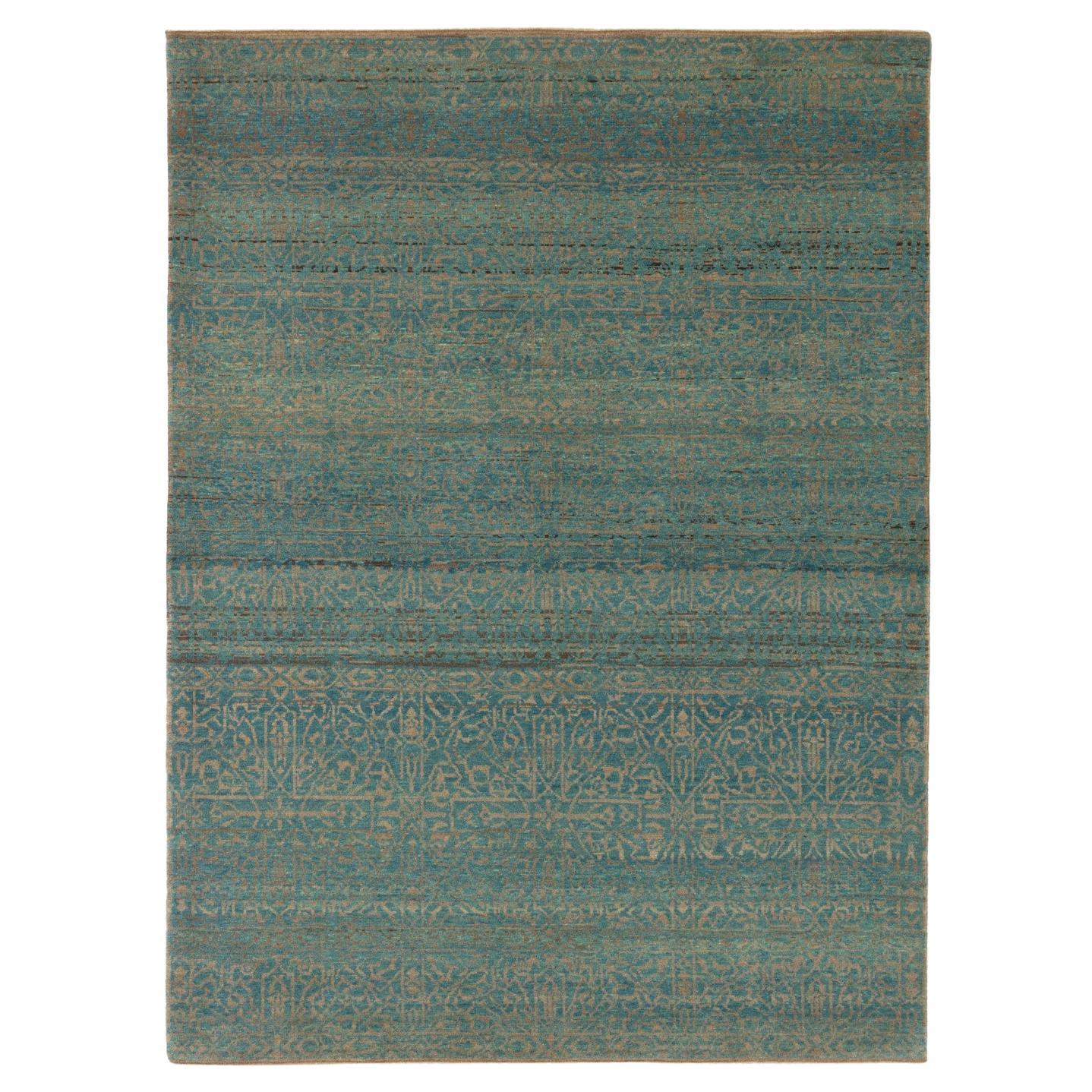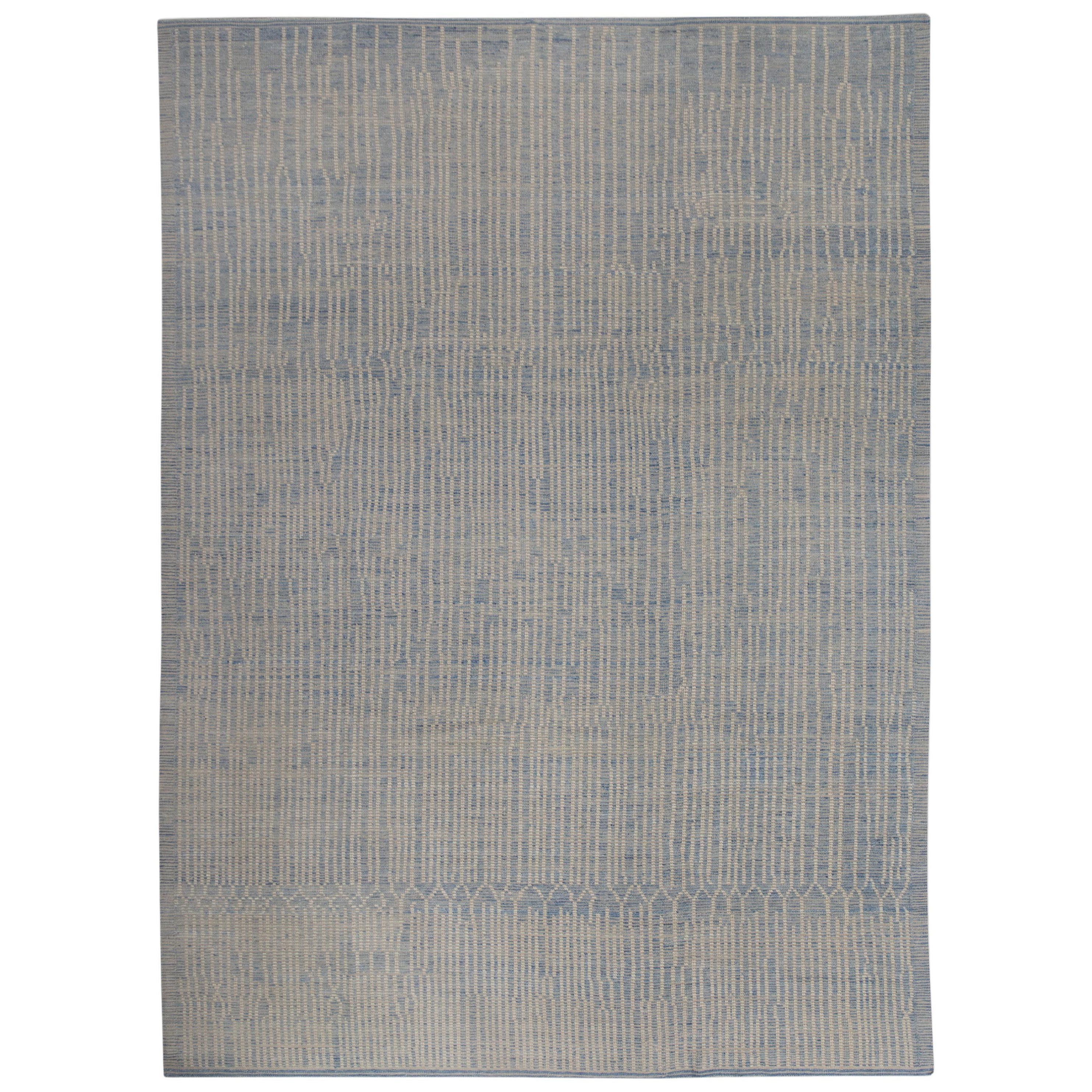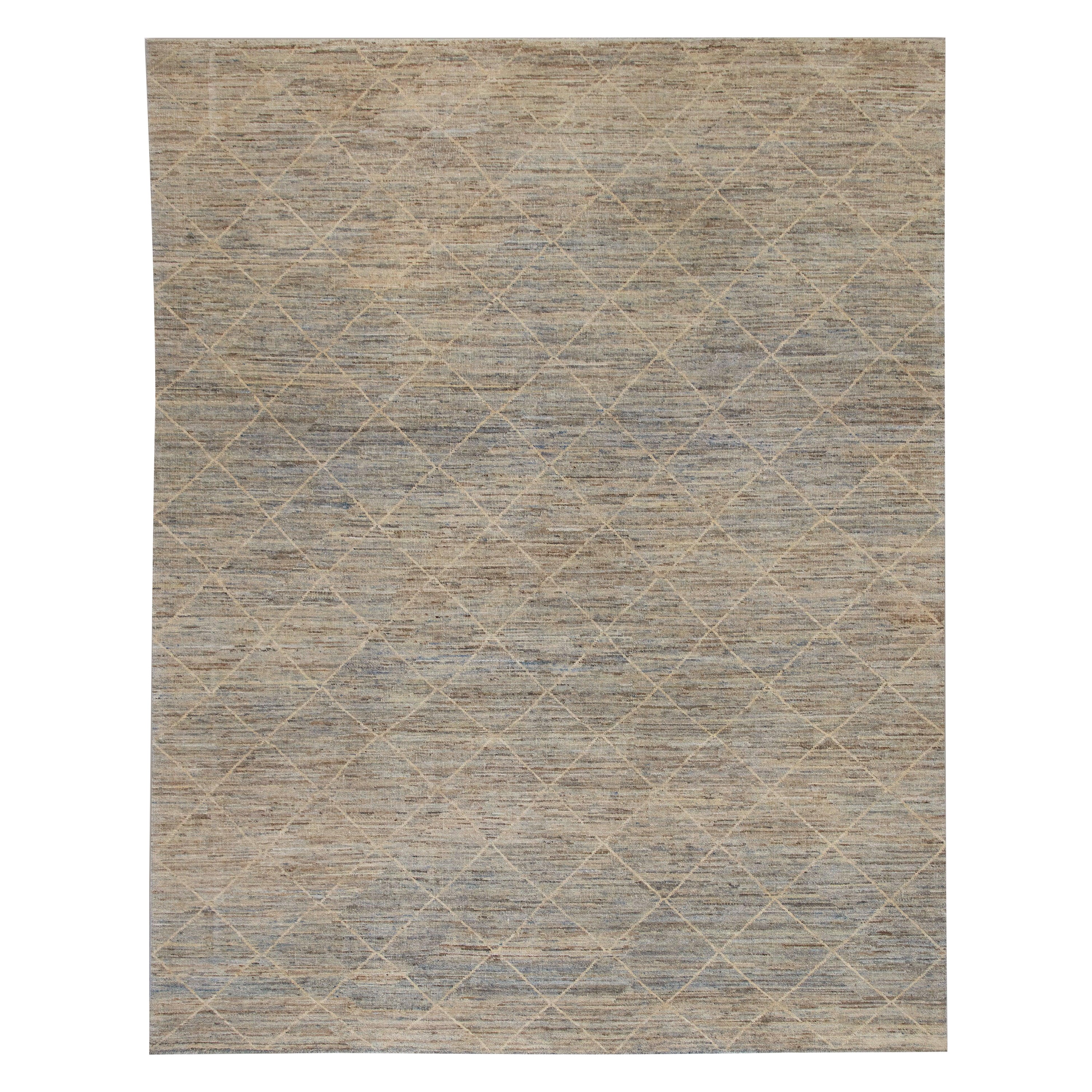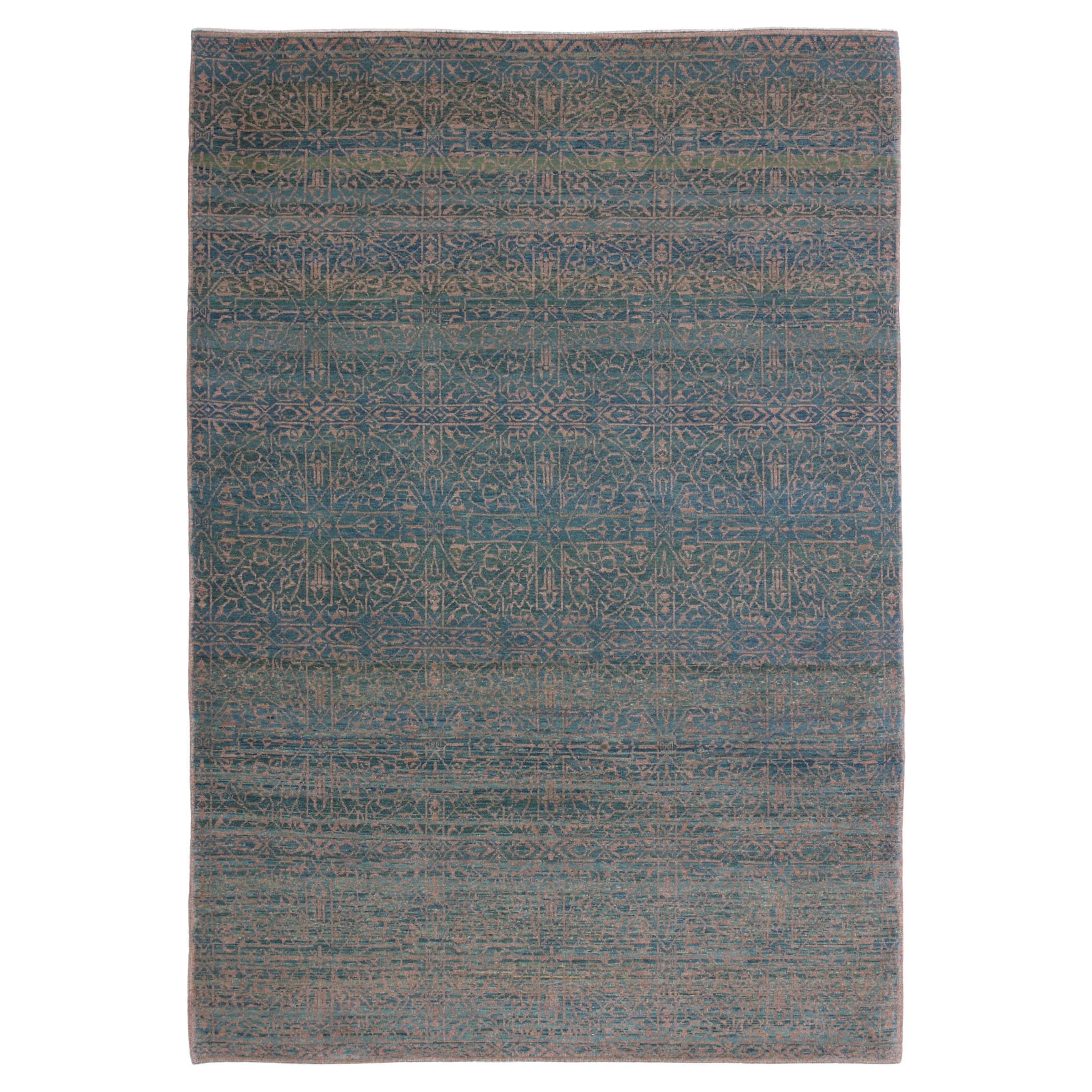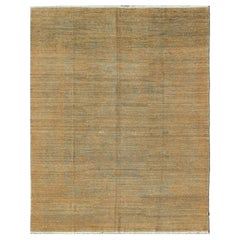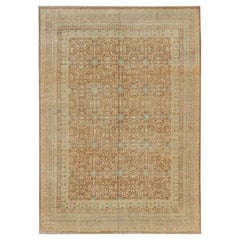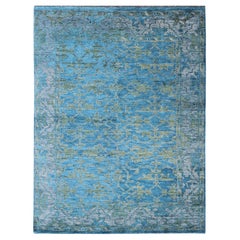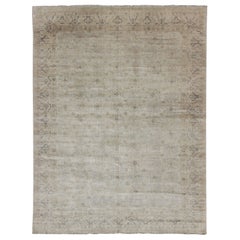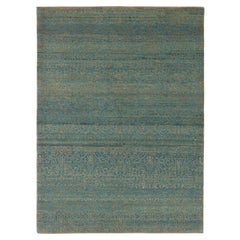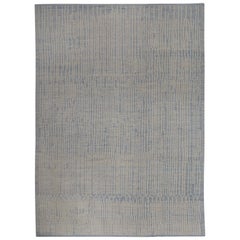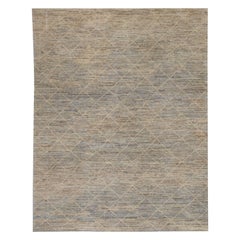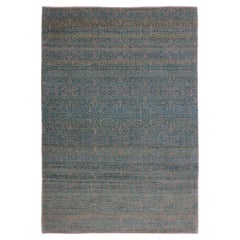Items Similar to Fine Transitional Rug by Keivan Woven Arts With Stylized Geometric Motifs
Want more images or videos?
Request additional images or videos from the seller
1 of 13
Fine Transitional Rug by Keivan Woven Arts With Stylized Geometric Motifs
$6,880
$8,60020% Off
£5,195.14
£6,493.9320% Off
€5,989.50
€7,486.8820% Off
CA$9,710.60
CA$12,138.2620% Off
A$10,704.09
A$13,380.1120% Off
CHF 5,600.89
CHF 7,001.1120% Off
MX$131,335.79
MX$164,169.7320% Off
NOK 70,504.07
NOK 88,130.0920% Off
SEK 65,932.46
SEK 82,415.5720% Off
DKK 44,709.83
DKK 55,887.2920% Off
About the Item
Light tan and bright yellow and very finely woven Transitional rug in the tan background and bright yellow highlights, Keivan Woven Arts / rug AN-115305, country of origin / type: Turkey / Tribal
Measures: 8'2 x 9'10.
This Turkish rug features a transitional design of stylized motifs in the central field, which are flanked by a repeating pattern in the border. The entirety of the piece is rendered in light tones, which makes it a versatile rug, well-suited for a variety of interiors.
- Attributed to:Keivan Woven Arts (Designer)
- Dimensions:Width: 98 in (248.92 cm)Length: 118 in (299.72 cm)
- Style:Oushak (In the Style Of)
- Materials and Techniques:Wool,Hand-Knotted
- Place of Origin:
- Period:
- Date of Manufacture:2010
- Production Type:New & Custom(One of a Kind)
- Estimated Production Time:Available Now
- Condition:In excellent condition.
- Seller Location:Atlanta, GA
- Reference Number:Seller: AN-1153051stDibs: LU883222776842
About the Seller
5.0
Platinum Seller
Premium sellers with a 4.7+ rating and 24-hour response times
Established in 1988
1stDibs seller since 2009
608 sales on 1stDibs
Typical response time: <1 hour
- ShippingRetrieving quote...Shipping from: Atlanta, GA
- Return Policy
Authenticity Guarantee
In the unlikely event there’s an issue with an item’s authenticity, contact us within 1 year for a full refund. DetailsMoney-Back Guarantee
If your item is not as described, is damaged in transit, or does not arrive, contact us within 7 days for a full refund. Details24-Hour Cancellation
You have a 24-hour grace period in which to reconsider your purchase, with no questions asked.Vetted Professional Sellers
Our world-class sellers must adhere to strict standards for service and quality, maintaining the integrity of our listings.Price-Match Guarantee
If you find that a seller listed the same item for a lower price elsewhere, we’ll match it.Trusted Global Delivery
Our best-in-class carrier network provides specialized shipping options worldwide, including custom delivery.More From This Seller
View AllFine Modern Rug With Transitional Design by Keivan Woven Arts
By Keivan Woven Arts
Located in Atlanta, GA
Modern rug with Transitional Design. Keivan Woven Arts rug AN-113353 , country of origin / type: Turkey / Modern, circa Early-21st century.
Measures: 8'3 x 10'0.
This finely hand kno...
Category
2010s Turkish Modern Turkish Rugs
Materials
Wool
$5,280 Sale Price
40% Off
Khotan Design Rug With All-Over Geometric Pattern by Keivan Woven Arts
By Keivan Woven Arts
Located in Atlanta, GA
This Khotan features a geometric all-over design flanked by a repeating pattern in the border. The entirety of the piece is rendered in light neutral tones, which makes it a versatil...
Category
2010s Afghan Khotan Central Asian Rugs
Materials
Wool
$6,712 Sale Price
25% Off
Contemporary Oushak Design Rug by Keivan Woven Arts
By Keivan Woven Arts
Located in Atlanta, GA
This magnificent Oushak features a splendid blue hued design at its center, with a lovely green and the complementary border however is rendered in some green hues.
Measures: 7'9 x ...
Category
2010s Indian Oushak Turkish Rugs
Materials
Wool
$2,200 Sale Price
20% Off
Large Muted Modern Khotan Rug with All-Over Sub-Geometric Motifs
By Keivan Woven Arts
Located in Atlanta, GA
Modern Khotan rug, rug OB-9413619-592009, country of origin / type: India / Khotan, circa Early-21st Century.
Measures: 12'0 x 15'0.
Category
2010s Indian Khotan Central Asian Rugs
Materials
Wool
$6,930 Sale Price
30% Off
Contemporary Oushak Rug by Keivan Woven Arts
By Keivan Woven Arts
Located in Atlanta, GA
Contemporary Oushak Rug by Keivan Woven Arts . rug OB-103432980, country of origin / type: India / Oushak, circa Early 21th century.
Measures: 7'9 x 9'9
This hand-knotted modern Ou...
Category
2010s Indian Oushak Turkish Rugs
Materials
Wool
Modern Rug from Nepal with All-Over Design
By Keivan Woven Arts
Located in Atlanta, GA
Nepalese modern rug in Variegated Sand-Tan, rug 19-0829, country of origin / type: Nepal / Modern
This rug from Nepal features a modern all-over des...
Category
2010s Nepalese Modern More Carpets
Materials
Wool
You May Also Like
Ararat Rugs Modern Rug with Mamluk Geometric Design, Natural Dyed Carpet
By Ararat Rugs
Located in Tokyo, JP
This rug has an interpreted design composed of a geometric lattice pattern taken from a part of the Mamluk rug, filling the field elegantly, has the impression that it is only part o...
Category
21st Century and Contemporary Turkish Revival Turkish Rugs
Materials
Wool, Natural Fiber, Organic Material
Handmade Wool Tulu Rug in Geometric Design 10' x 13'10"
By Asian Modern
Located in Houston, TX
A stunning modern Turkish Tulu rug that is sure to add a touch of warmth and luxury to any space. This rug has been meticulously handwoven using traditional techniques, ensuring its ...
Category
2010s Turkish Modern Turkish Rugs
Materials
Wool
$4,980 Sale Price
40% Off
Oriental Hand Knotted Turkish Modern Rug 9'4" x 11'11" #7057
Located in Houston, TX
Oriental Hand Knotted Turkish Modern Rug 9'4" x 11'11" #7057 Explore a curated collection of hallway runners, wool rugs, and handmade masterpieces where elegance meets functionality....
Category
21st Century and Contemporary Turkish Turkish Rugs
Materials
Wool
$3,720 Sale Price
76% Off
Ararat Rugs Modern Rug with Mamluk Geometric Design, Natural Dyed Carpet
By Ararat Rugs
Located in Tokyo, JP
This rug has an interpreted design composed of a geometric lattice pattern taken from a part of the Mamluk rug, filling the field elegantly, has the impression that it is only part of a larger scheme designed 15th-century rug from the Mamluk era, Cairo region, Eygpt. Mamluk carpets originated in a physical environment that lacked the combination of abundant marginal grazing land and a temperate climate with cool winters that were common to most carpet-weaving areas in the Islamic world. While related to a broader tradition of Turkish weaving centered in Anatolia, far to the north, the designs of these carpets include atypical elements, such as stylized papyrus plants, that are deeply rooted in Egyptian tradition. Their unusual composition and layout probably represent an attempt to develop a distinctive product that could in effect establish a “Mamluk brand” in the lucrative European export market. The uncharacteristic color scheme—devoid of the undyed white pile and employing a limited range of three or five hues in much the same value—also suggests a conscious attempt to create a particular stylistic identity. Also virtually unique in the world of Islamic carpets is the S-spun wool. It has been argued that the tradition of clockwise wool spinning originated in Egypt because of the earlier Egyptian tradition of spinning flax into linen thread. Details of the plant’s botanical structure make it impossible to spin flax fiber in the more common counterclockwise direction utilized throughout the Middle East for wool and cotton.
Mamluk carpets with the color combinations seen in the Simonetti are now generally accepted as part of an earlier tradition that has many links to the weaving of Anatolia, Iran, and Syria. The “three-color” Mamluk carpets, well represented in the Metropolitan’s collection, represent a later development that continued well after the Ottoman conquest of Egypt in 1517. Many such carpets may have been produced well into the seventeenth century, and possibly even later. (Walter B. Denny in [Ekhtiar, Soucek, Canby, and Haidar 2011]). The design of the rug is interpreted by our designers from our Mamlouk-type rugs collection and soft colors are used for this rug.
Color summary: 2 colors of total
Bamboo Beige 99 (only specially washed)
Feldgrau 414 (Chamomile – indigo)
Group: Islamic Rugs...
Category
21st Century and Contemporary Turkish Revival Turkish Rugs
Materials
Wool, Natural Fiber, Organic Material
Handwoven Wool Turkish Oushak Rug 10'3"x 14'
By Asian Modern
Located in Houston, TX
This Turkish oushak rug is a stunning piece of art that has been handwoven using traditional techniques by skilled artisans. The rug features intricate patterns and a soft color pale...
Category
2010s Turkish Modern Turkish Rugs
Materials
Wool
$6,888 Sale Price
40% Off
Ararat Rugs Modern Rug with Mamluk Geometric Design, Natural Dyed Carpet
By Ararat Rugs
Located in Tokyo, JP
This rug has an interpreted design composed of a geometric lattice pattern taken from a part of the Mamluk rug, filling the field elegantly, has the impression that it is only part of a larger scheme designed 15th-century rug from the Mamluk era, Cairo region, Eygpt. Mamluk carpets originated in a physical environment that lacked the combination of abundant marginal grazing land and a temperate climate with cool winters that were common to most carpet-weaving areas in the Islamic world. While related to a broader tradition of Turkish weaving centered in Anatolia, far to the north, the designs of these carpets include atypical elements, such as stylized papyrus plants, that are deeply rooted in Egyptian tradition. Their unusual composition and layout probably represent an attempt to develop a distinctive product that could in effect establish a “Mamluk brand” in the lucrative European export market. The uncharacteristic color scheme—devoid of the undyed white pile and employing a limited range of three or five hues in much the same value—also suggests a conscious attempt to create a particular stylistic identity. Also virtually unique in the world of Islamic carpets is the S-spun wool. It has been argued that the tradition of clockwise wool spinning originated in Egypt because of the earlier Egyptian tradition of spinning flax into linen thread. Details of the plant’s botanical structure make it impossible to spin flax fiber in the more common counterclockwise direction utilized throughout the Middle East for wool and cotton.
Mamluk carpets with the color combinations seen in the Simonetti are now generally accepted as part of an earlier tradition that has many links to the weaving of Anatolia, Iran, and Syria. The “three-color” Mamluk carpets, well represented in the Metropolitan’s collection, represent a later development that continued well after the Ottoman conquest of Egypt in 1517. Many such carpets may have been produced well into the seventeenth century, and possibly even later. (Walter B. Denny in [Ekhtiar, Soucek, Canby, and Haidar 2011]). The design of the rug is interpreted by our designers from our Mamlouk-type rugs collection and vivid colors are used for this rug.
Color summary: 2 colors in total;
Imperial Red 426 (Madder Root)
Sunray Color 405 (Henna)
Group: Islamic Rugs...
Category
21st Century and Contemporary Turkish Revival Turkish Rugs
Materials
Wool, Natural Fiber, Organic Material
More Ways To Browse
Mappin And Webb Silver
Matching Club Chairs
Metal Folding Stool
1970 Scandinavian Leather Chair
1970s Plastic Lounge Chairs
3 Seat Velvet Sofa
3 Sided Travertine Coffee Table
Antique Belgium Table
Antique Swiss Chair
Balloon Chairs
Coffee Tables From 1960s And 1970s
Embroidery Rugs
Leather Footstool Used
Mahogany Carved Console
Mid Century Danish Footstool
Mid Century Danish Teak Dining Table Leaves
Mid Century Modern 1950 1960 Wall Art
Mid Century Modern Black Tufted Chair
